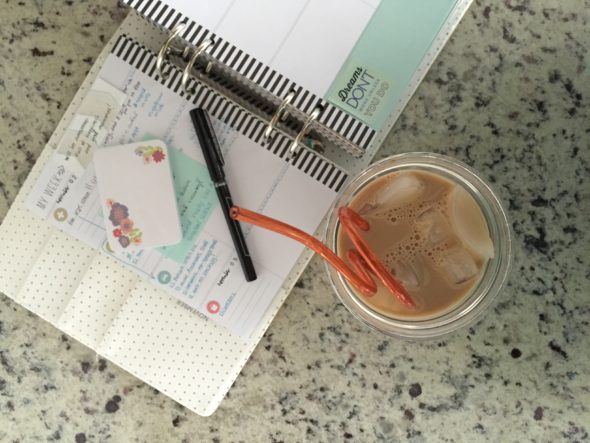Your cart is currently empty!
Free Shipping on all orders over $75!
Setup An Easy Monthly Budget
By
.

I’m going to talk about a dirty word. It’s a six letter dirty word. Can you guess what it is?
Budget.
Not many people want to think or talk about budgeting. It has a lot of negative connotations: visions of living on rice and beans, never having any fun, counting each and every penny, worrying about spending and expenses.
The truth, though? Budgeting doesn’t really have to be like that. A budget is just a tool that makes your money work for you. That’s it.
And to show you how easy it is, I thought I would share our monthly budget process.
If you’re just beginning, this process might take you a bit of time – but limit yourself to only one hour, for sanity’s sake (and if you don’t complete it within an hour, come back later and finish it up). If you’ve budgeted in the past, it will probably take you only about 30 minutes to throw this budget together. Once you’ve stuck with it for a few months in a row, it should take you even less time – 20 minutes or so – to set your month up.

Step 1 – Estimate your income
If you’ve been paying even the least amount of attention to your bank account, chances are you have a rough idea of your monthly income. Even if your income varies from week to week, a ballpark amount is likely in your brain. For this exercise, let’s just pick a nice, round number – $3,000. 00.
Step 2 – List your fixed expenses
Fixed expenses are normally defined as bills whose amounts don’t change month to month (with a mortgage payment being a great example) but I’m going to widen the definition to include expenses that are “fixed” to your household – meaning, expenses that are absolutely necessary for the running of your household. These would include –
- Mortgage or rent
- All utility bills
- Groceries / eating out (For example, your children may have baseball practice every Wednesday night, making it impossible for you to cook that night. So, plan to eat out every Wednesday and set an estimate for how much it should cost.)
- Automotive expenses, including a small amount for any unforeseen repairs.
- Money toward insurance premiums – take the full amount of your premium, multiply it by .05 to compensate for any increase at the time of renewal, and add that to the premium total. Divide that amount by 12 to see how much you should set aside each month to cover the renewal bill.
- If you have debt, include your debt in this category because it is a necessary expense that you need to make sure you’re able to cover. Estimate this category based on the minimum payments, or the typical payment you seem to apply toward the debt each month (for example, maybe you normally do the minimum plus $25.00). I’ll be covering a budget geared toward paying off debt at a later date.
- Any other applicable, non-negotiable expense that your family has each month like a membership fee to a sports club, charitable contributions, or deposits into a savings account.
Once you’ve listed everything, assign approximate amounts to these expenses or actual amounts if you know them.
Step 3 – Begin with your income, and subtract your expenses
Now, revisit your income from Step 1 and begin running down the list of your expenses, subtracting the amount of the expense from your income. For example –
Income – $3000.00
Mortgage ($950) – $2050.00 income remaining
Electric ($110) – $1940.00
Water & Sewer ($130) – $1810.00
Trash Collection ($45) – $1765.00
Cable & Internet ($200) – $1565.00
Groceries ($325) – $1240.00
Eating out ($150) – $1090.00
Gas & Automotive Repairs ($190) – $900.00
Insurance Premiums ($200) – $700.00
Debts ($300) – $400.00
Step 4 – Begin with remaining income, and subtract miscellaneous expenses
Once you’ve made sure you have all of your basics covered, you can spread money out to other expenses that maybe aren’t so necessary. These include clothing, hobby purchases, gifts, party planning, etc. These will change each month, based on your family’s needs, making this the most flexible part of your budget (but sometimes the part you have to get the most creative with in order to cover).
Remaining Income – $400.00
Summer wardrobe refresh ($85) – $315.00 income remaining
Starbucks card reload ($50) – $265.00
Summer reading for the family ($110) – $155.00
Fun Money / Entertainment ($100) – $55.00
Grandma’s birthday gift ($50) – $5.00
Step 5 – Assess what’s left (or what isn’t)
In our example budget above, we have $5.00 left that isn’t assigned to anything. This means I can either put that in savings (WOW!! A whole $5.00!!!), or put it in another category. Let’s put it in the fun money/entertainment because, hey, why not.
Sometimes, you end up with a shortage and you can’t cover all of your expenses. This means two things – (1) you’re going to end up spending more than 30 minutes on this project, and (2) you need to be more realistic either about your income, your expenses, or both. It could also mean you need to cut down somewhere, if all of your amounts are fairly spot on.
In the event you have to cut down, begin with the expenses from Step 4. Sometimes, the bills in Step 2 can be adjusted – you can call your utility company and see if they have a budget billing program, or you can dive into the world of extreme couponing to slash down your grocery bill – but, I recommend first cutting out anything superfluous and then examining what fixed expenses can be tweaked.
Alternatively, you can work on increasing your monthly income.
Step 6 – Go spend your money… according to your budget, of course
With every single dollar that you earn assigned to a specific task, you can spend your money without wondering, at the end of the month, where the heck it all went. If you’re like me and you have a hard time matching up the due dates of your bills to your pay cycle, and if you have some savings sitting around, start the month out with your checking account balance at your income amount – then, as you get paid throughout the month, move those paychecks to savings to replenish what you transferred when starting the month.
Step 7 – You thought you were done, didn’t you? Nope!
At some point before the end of the budgeted month, take a few minutes (just five should do it) and quickly list out what you know is on the horizon for the next month. For example, it’s June right now and I know that in July our car insurance premium is due, and that we want to start saving up for the holidays. This will make the time you take at the end of the month to set up your budget for the next month significantly shorter. It should also minimize surprise expenses (because, let’s face it, Christmas is never a surprise… ).
Hopefully this post helps put you well on your way to directing how your money is spent. Good luck, and thanks for reading 🙂

Leave a Reply